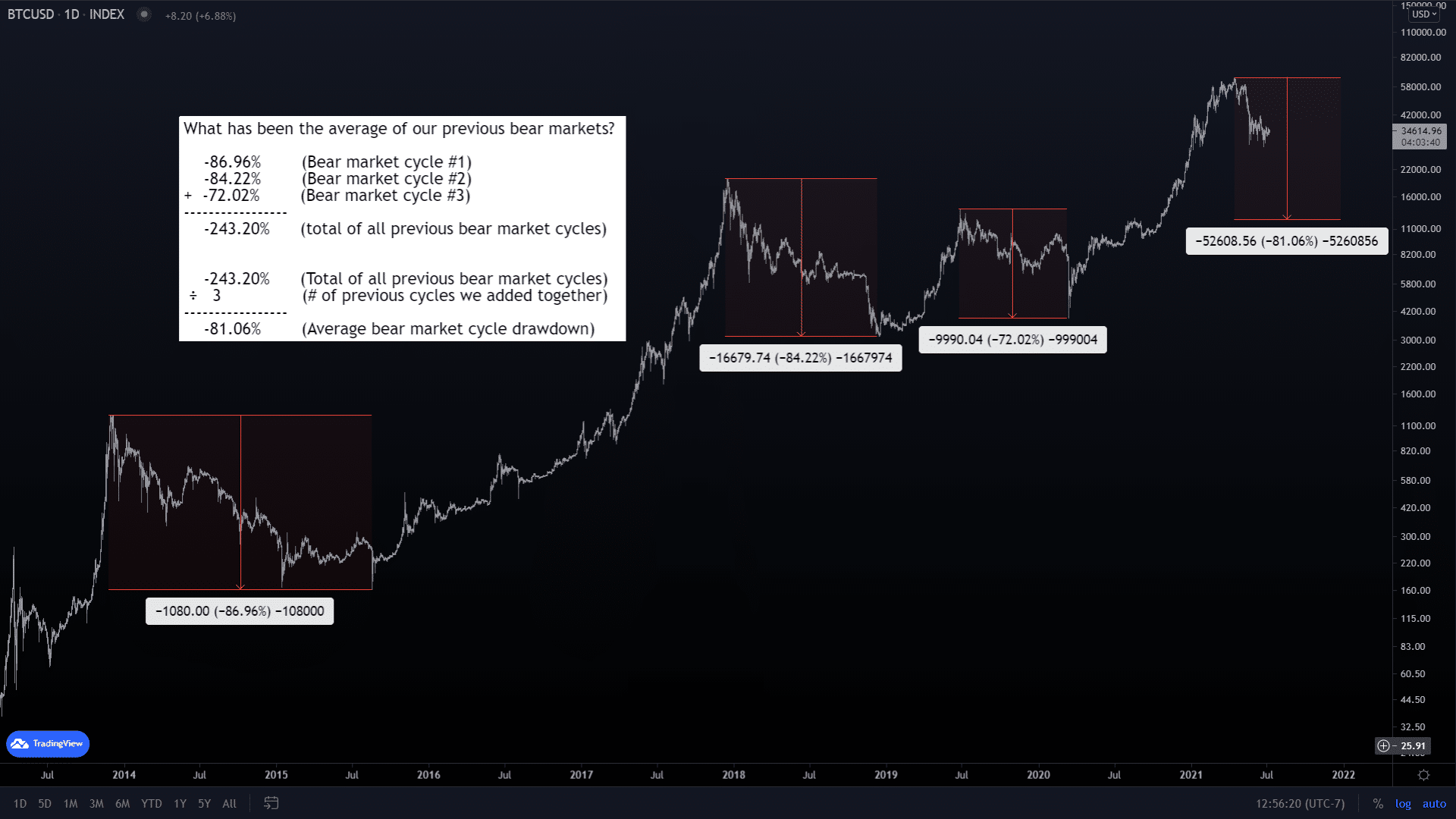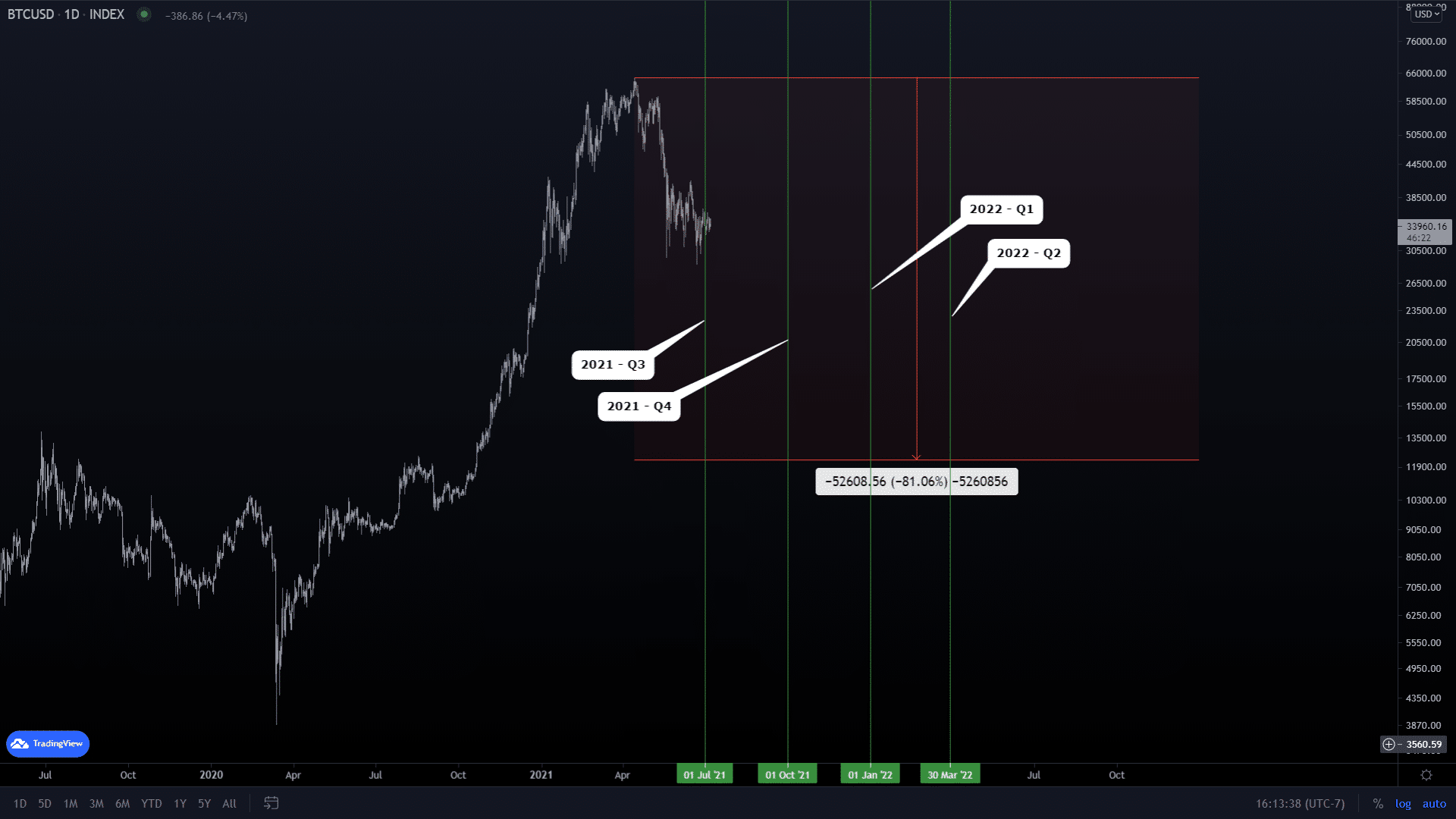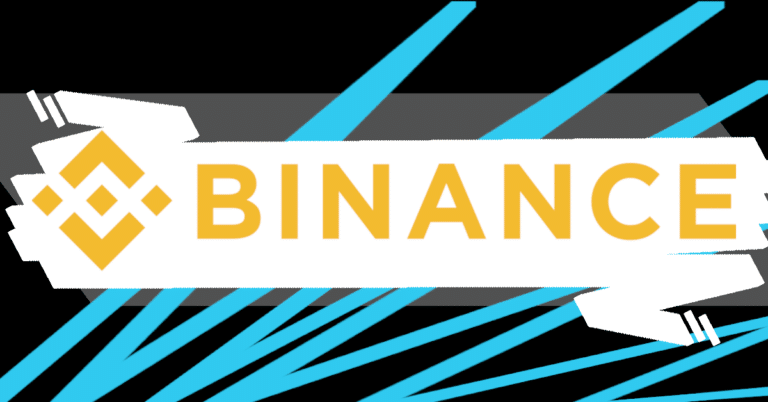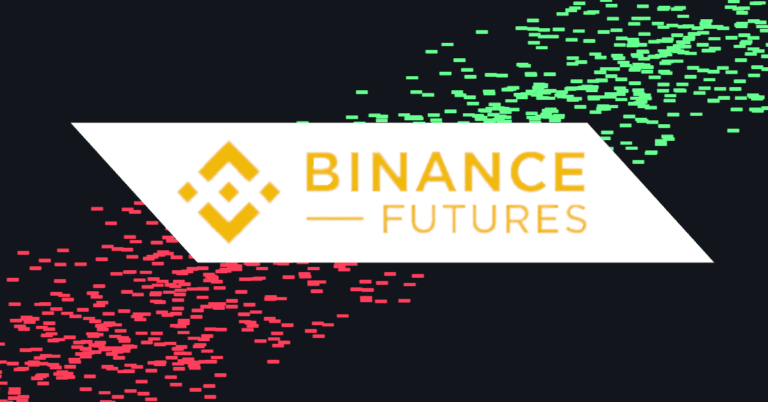*This post may contain affiliate links that help keep the lights on, find more info in our full disclaimer.
Should I Buy Cryptocurrency In a Bear Market?
- Thomas DeMichele
Buying Crypto in a Bear Market
A bear market can be a great opportunity to purchase cryptocurrency at a discount. One of the best strategies for accumulating crypto in a bear market is Dollar-Cost Averaging.
This article will explain the logic behind building an average position using dollar-cost averaging in a bear market. Not only will we discuss why a dollar-cost strategy makes sense, especially in crypto, we will also give some examples of dollar-cost averaging plans we have used ourselves over our years while personally investing in cryptocurrency.
Finally, we will explain how to quickly start averaging today using a bank transfer or credit/debit card on Binance (Binance is our top choice of exchanges due to its low fees and various onboarding options for a wide variety of regions across the globe).
What is Dollar-Cost Averaging (DCA) Cryptocurrency?
Dollar-Cost Averaging (DCA) cryptocurrency is when you incrementally buy a cryptocurrency in order to reduce the impact of expected market volatility. This averaging strategy typically involves buying cryptocurrency at fixed intervals with a pre-determined amount of capital each time.
In terms of when these intervals should be, they could be buying cryptocurrency at pre-planned levels, increments of time, or more generally simply buying at different prices over time instead of all at once. In terms of capital, it can be buying with equal amounts of fiat capital, buying fixed amounts of a crypto asset, a mixture of both of the previously mentioned, or spending a percentage of your disposable income per paycheck.
Regardless of your specific DCA method, the goal is the same, to capture a better average price over time in order to reduce the margin of error when trying to time the bottom of a volatile market. This strategy is especially well suited to directionally consistent but volatile markets like Cryptocurrency.
Historical Crypto Cycles and Dollar-Cost Averaging
BTC (Bitcoin), and other top cryptocurrencies like ETH (Ethereum) or BNB (Binance Coin), have generally gone up over time. Consider, despite some severe drawdowns of 80% – 90% in between their respective highs, Bitcoin has gone from roughly $0.01 to $64,000 over the past decade!
Many people, given those facts, will expect the trend to continue and want to capture the long-term upside while attempting to avoid the periods of drawdown. One of the best ways to do that is to buy in over time, creating an average price, not just when the price is going up (when everyone wants to buy and making gains is easy), but when the price is going down.
In other words, even though DCA works well in any market, one of the best methods for accumulating crypto is dollar-cost averaging in a bear market!
Creating a DCA Plan for a Crypto Bear Market
Let’s say Bitcoin’s price has fallen recently, and we suspect we are in a downtrend. We know we want to be in Bitcoin, but we also know we want an average price low enough that a potential 80%+ drawdown from the top won’t be too devastating. To accomplish this, we can develop a DCA strategy that will provide us with pre-determinable average position prices, thus eliminating a lot of the guesswork that comes with long-term investing.
Let’s discuss some basic logic behind creating a DCA plan and then apply it to both a time-based DCA plan and a level-based DCA plan. The first thing we want to know is how long we are going to DCA for and what price we are going to DCA to.
Figuring Out the Average Drawdown of a Crypto Bear Market
First, as illustrated in the image below, we’ll look at Bitcoin and figure out the average drawdown of past bear markets to get a sense of how far we may need to average down.
We can see the average drawdown of a bear market is roughly -81.06%.
Here is a breakdown of the logic we used.
| Info | Value |
|---|---|
| Previous bear market cycle #1 | -86.96% |
| Previous bear market cycle #2 | -84.22% |
| Previous bear market cycle #3 | -72.02% |
| Sum % of all previous bear market cycles | -243.20% |
| # of previous bear market cycles | 3 |
| Divide the summed % by the # of previous cycles | -81.06% |
Figuring Out the Average Length of a Crypto Bear Market
Now let’s look a the average length of a bear market for crypto.
As you can see from the image above, the length of a bear market varies quite a bit. As such, it is hard to define an average length that would be expected to have good predictive power moving forward. Here are some options you could pick to use:
- The shortest previous bear market cycle, thus giving you the smallest amount of time to allow your planned entries.
- The longest previous bear market cycle, this would provide you with a long window of buying opportunity.
- The median/mean of all previous bear market cycles, this option being the best of both worlds if you are sold on using a time-based entry approach.
With those options in mind, we would suggest you use price-based (horizontal) levels if you have a large lump sum of capital to deploy. However, if you plan on having smaller periodic amounts available that you can consistently commit to the market (for example, $100 a month via your paycheck), you will likely prefer a time-based approach instead for simplicities sake.
Let’s go over both strategies now below.
Planning out a Time-Based DCA Strategy
For a time-based strategy, we will want to focus on the average drawdown of previous bear markets and figure out a strategy for incrementally deploying capital until that drawdown is reached.
In this example, we will plan to invest once each quarter for the next year, but we will stop buying if Bitcoin draws down more than 81.06% (our average drawdown percentage), and we will stop buying if Bitcoin goes above our average cost (this will allow us to average down our price instead of averaging it up).
For this, we will need to split our total capital into 4 parts and commit each part each quarter. If we follow the plan illustrated in the image below, you can see we will get the last of our entries in Q2 2022, assuming an 81.06% drawdown was not achieved first.
How to Plan out DCA Levels
For a price-based DCA method where we buy at fixed prices, we don’t care about timeframes. Instead, we are simply going to plan out major support levels to buy.
In the example strategy below, we have detected 3 major support levels. Here we will split our capital into 3 equal amounts and buy these levels regardless of when they are hit.
This will produce an average entry of $22,191.65 if we hit all our levels, as illustrated below.
Here is the logic we used with our horizontal price-based plan.
| Info | Value |
|---|---|
| Entry #1 price | $33,871.80 |
| Entry #2 price | $19,975.47 |
| Entry #3 price | $12,727.69 |
| Sum $ of all previous entries | $66,574.96 |
| # of previous entries | 3 |
| Divide the summed $ by the # of previous entries | $22,191.65 |
Setting Up Your Exchange Account to DCA
Now that you know how to DCA, the next step is doing it. Let’s discuss what that looks like using Binance as an example. First, if you haven’t already, sign up for Binance and get up to 45% off trading fees with our code when you use BNB to trade.
How to Buy Crypto with Card & Deposit Channels
After you sign up for Binance, you’ll need to deposit either crypto or fiat to get started dollar-cost averaging. Most traders will choose a fiat-based payment method for accumulating crypto, so let’s focus on that approach.
Fiat channels include a variety of payment methods, here are the 2 main payment channels in fiat:
- Bank Transfer (deposit)
- Credit and Debit Card
Each of these methods has different benefits, as mentioned below.
With a bank transfer, you can deposit larger amounts, and sometimes there are even promotions running, for example, with EUR and GBP for Binance via this: free EUR and GBP bank deposits promotion on Binance.
With a credit/debit card, you can buy 50+ different coins on Binance with no wait time, meaning you can start dollar-cost averaging today. You can even bind your card and save it for easier checkouts in the future, so you can always react quickly (unless using resting limit orders) to buy when you need to.
With that said, deposits can take a few days, and you’ll need to do identify verification to increase limits.
Dollar-Cost Averaging on Binance
Regardless of your preferred fiat channel, once you are ready to deposit fiat, take the following steps:
- Deposit the amount of fiat you’ll need for your next buy using your preferred method of deposit.
- For time-based investing, you can either set a recurring buy (for example with Binance US) or you can set a calendar alert for yourself using a preferred calendar app to go in and buy on your set date.
- For level-based investing, simply create limit orders for your preplanned prices and leave them on the books.
That is all there is to it. Either way, you’ll want to put your emotions aside and stick to the plan once you create it! Capturing that average price is going to require discipline.
Most exchanges have a DCA option for “recurring” time-based buying. But for price-based levels, you’ll need to go into the exchange and set resting limit orders.





